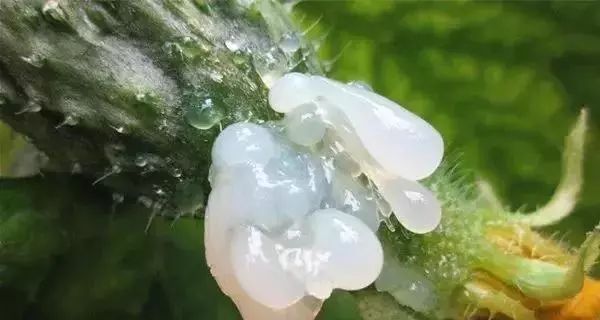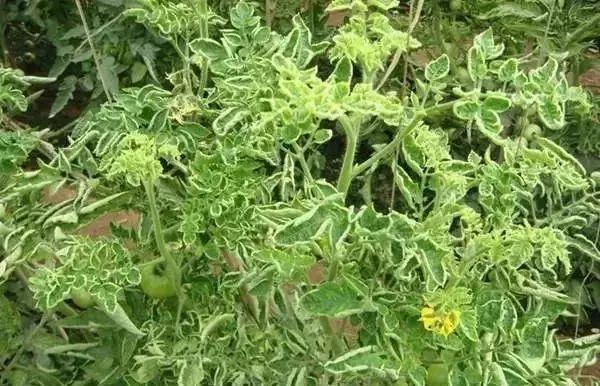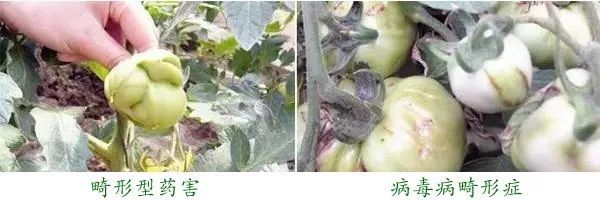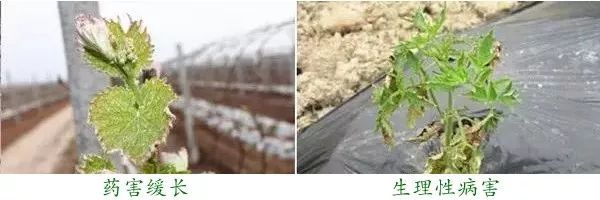In agricultural production, the prevention and control of crop diseases is very important. In order to solve the problem, we must first distinguish the diseases of crops. This article teaches you to identify bacterial diseases, fungal diseases, viral diseases, physiological diseases and Drug damage.
First, the main characteristics of various diseases

(1) Fungal diseases
1, will produce different shapes of the disease
2, the disease will produce different colors of mildew or powder, no odor.

(2) Bacterial diseases
1. There is no mildew or powder on the leaf, and the lesion is very thin and easy to be broken or perforated.
2. Roots and leaves are perishable and smelly.
3, there are sores on the fruit, there are small protrusions on the surface of the fruit.
4, the tip of the root vascular bundle is easy to brown.
(3) Viral diseases
The disease is mainly manifested in the young leaves, although the species is small, but the damage is large and easy to be refractory.
1, mosaic virus, leaves shrink, yellow-green phase, golden easy to concave, dark green easy to convex, disease-free leaves flat, leaf eyebrows fan-shaped.
2, 厥 leaf type, the leaves are slender, the veins are rushed, and are linear.
3, rolled leaf type, the blade is twisted and bent to the water.
4, the streak type, on the ripe fruit of the tomato, appear blue-white, gradient rust color, not easy to color, the skin has brown stripes outside the skin. The tip of the capsicum fruit turns yellow upwards, and short brown stripes appear in the yellowed area.

(4) Physiological diseases
It is a non-biological disease and is not contagious. Generally, it is lower than 20 °C in the morning, and the flowering result can not be normally pollinated, and it is easy to produce empty fruit, deformed fruit, and falling flowers and fruit. From 3 pm to midnight, the temperature is lower than 16 °C, and the nutrients are not easy to be converted and accumulate on the leaves and flower buds, causing the leaves to be thick and thick, and the green leaves are easy to turn into fruits, forming flower topping, melon topping and self-sealing. In the middle of the night, the temperature is lower than 10 °C, which is easy to be blocked at low temperature, and the leaves are easy to age and dry.
Solanum vegetable deficiency syndrome: The crop faucet is curved, and the self-sealing top is easily boron-deficient. Flowering is not strong and boron is also lacking. The new leaves are fresh under the faucet, and the dry side is calcium deficiency. The new leaf under the faucet is yellow leaf for sulfur deficiency. The new leaf under the faucet is white leaf iron deficiency. The lower leaves are all yellowed, which is magnesium deficiency. The lower veins are green, the leaves are drooping, and the mesophyll has yellow spots. This is manganese deficiency. The lower mesophyll turns yellow and the veins are green. This is zinc deficiency. The lower leaves are all green and the yellow sides are deficient in potassium.
Second, how to distinguish crop physiological diseases and infectious diseases
(1) Physiological diseases "three sexes and no ones"
Plant physiological diseases are caused by non-biological factors, that is, unsuitable environmental conditions. Such diseases are not infected by pathogens and cannot be transmitted to each other among plant individuals, so they are also called non-infectious diseases.
1, sudden
In the occurrence and development of diseases, the onset time is mostly consistent, and there are often sudden occurrences. The shape, size and color of the lesions are relatively fixed.
2, universal
Usually it is usually formed into pieces and blocks, which are often related to special conditions such as temperature, humidity, light, soil, water, fertilizer, waste gas, waste liquid, etc. Therefore, there is no disease center, and the disease of adjacent plants is not much different, even nearby Some different crops or weeds will also show similar symptoms.
3, sporadic
Most of the plants are pathological and have a regular distribution on different plants. If appropriate measures are taken to change the environmental conditions, the plants can generally recover.
4, no symptoms
Physiological diseases are only sick and have no signs.
(2) Infectious diseases "three sexes and ones"
1. Infectious
Diseases are caused by biological factors and can be transmitted to each other among plant individuals, which is also called invasive disease. There are light, medium and heavy changes in the occurrence and development of sequential diseases. The shape, size and color of the lesions will change at the beginning, middle and late stages. Therefore, lesions of various periods can be seen in the field at the same time.

2, limitations
There is a disease center in the field, that is, there is a sporadic diseased plant or diseased leaf in the field, and then spreads to the surrounding area. The disease and the healthy plants will be staggered, and the disease of the plant far from the disease center will be alleviated. There are also differences in the condition between the plants.
3, point hair
Except for viruses, nematodes and a few fungi and bacterial diseases, the distribution of lesions in various parts of the same plant has no regularity, and the occurrence of lesions is random.
4, there are signs
In addition to viruses and mycoplasma diseases, other infectious diseases have symptoms. For example, bacterial diseases have pus in the diseased part, and fungal diseases include rust, powder, mildew, cotton batt, etc. in the diseased part. Of course, whether it is a physiological disease or an infectious disease, in order to be more accurate in the diagnosis and identification, on the basis of the above diagnosis, combined with laboratory identification, it is possible to further obtain a more accurate and different shape of the lesion.
Third, how to distinguish between phytotoxicity and disease

(1) The difference between spotted phytotoxicity and physiological disease
The distribution of spotted phytotoxicity on plants is often irregular, and the whole field is also light and heavy. Physiological diseases usually occur, and the symptoms of plants appear more consistent. Spot-type phytotoxicity and fungal phytotoxicity are also different. The former has a large change in spot size and shape; the latter has a disease center and the spot shape is relatively uniform.

(2) The difference between yellowing-type phytotoxicity and deficiency of yellowing
The yellowing caused by phytotoxicity often develops into dead leaves from yellow leaves, with plenty of sunny weather and rapid yellowing; lack of yellowing of nutrients, more rainy days, slower yellowing, and yellowing often with soil fertility and fertilization The level is related and the performance is consistent in the whole field. Compared with the yellowing caused by the virus, the yellow leaves of the latter often have a greenish appearance, and the diseased plants exhibit systemic conditions, and the diseased plants are mixed with healthy plants.

(3) The difference between malformed phytotoxicity and viral disease deformity
Malformations caused by phytotoxicity are common, and local symptoms are manifested on plants; malformations caused by viral diseases are often sporadic, often accompanied by symptoms such as broken green, clear veins, and wrinkled leaves.

(4) The difference between the wilting of the phytotoxicity and the wilt of the infective disease
The wilting caused by phytotoxicity has no morbidity center, and most of them have a slow process, first yellowing, post-dead strain, no browning of roots and stems; the wilting caused by invasive diseases is mostly obstruction of tissue obstruction, in sunny, evaporation When it is big, it will first wilting, and then it will lose its green and dead plants. The root catheter often has browning.

(5) The difference between the slowness of phytotoxicity and the stiffness and deficiency of physiological diseases
The stagnation caused by phytotoxicity is often accompanied by symptoms of plaques or other phytotoxicity, while the physiological toxicosis is characterized by poor root growth, and the dysfunction of the deficiency is yellow or dark green.
Of course, no matter the phytotoxicity or disease, in the self-diagnosis and identification, in order to be more accurate, based on the above diagnosis, combined with professional identification, we can further obtain more accurate identification results.
(Source: Tianbao Agricultural Technology Service Platform)
1.The attachment of the suspension include the feed tool, ball seat, lock seat, ball feeder , tail tube glue plug, drill rod glue plug, and copper ball ( glue wood ball ) Companies can also design and manufacture according to the special requirements of users.
2.It plays a very important role in cementing tools and helps the implementation of various cementing tools.
Suspender Attachment,Oilfield Drilling Mechanical,Technical Oilfield Attachment,Mechanical Energy
Puyang Junhong Rubber Co., Ltd. , https://www.pyjhxs.com
![<?echo $_SERVER['SERVER_NAME'];?>](/template/twentyseventeen/skin/images/header.jpg)